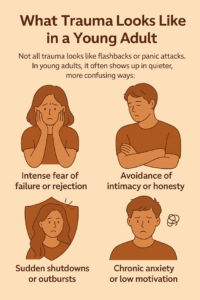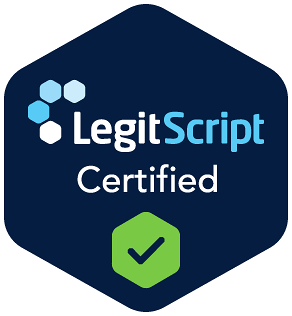When your child keeps slipping back into old patterns, it can feel like nothing is working. As a parent, you’ve shown up, stayed up, and given everything you could. But what if the problem isn’t just behavior—it’s buried pain? EMDR therapy offers something different.
What Is EMDR and Why Is It So Powerful?
Eye Movement Desensitization and Reprocessing (EMDR) is a trauma-focused therapy designed to help the brain “unstick” from painful experiences that keep replaying—whether consciously or not. It doesn’t require your child to rehash every detail of their trauma. Instead, EMDR helps them reprocess those memories so they no longer trigger the same emotional and behavioral spirals.
Unlike traditional talk therapy, EMDR uses guided bilateral stimulation (like rapid eye movement or tapping) to help the brain integrate painful memories in a more adaptive way. Think of it as decluttering an overstuffed emotional closet—without having to take everything out and fold it in front of you.
Why Trauma Often Drives Self-Destructive Behavior
For many young adults who relapse or continue to use, trauma is the silent engine behind their choices. It’s not always obvious trauma, either. Maybe it’s a chaotic breakup, childhood bullying, or the lingering impact of emotional neglect. EMDR doesn’t judge the size of the wound—it just helps them heal it.
If your 20-year-old keeps self-sabotaging or pushing you away, it might not be about rebellion or defiance. It could be an old pain running the show behind the scenes.
How EMDR Supports Emotional Regulation
One of the most immediate benefits of EMDR is a shift in how clients react to triggers. Many young adults describe feeling less reactive, more in control, and strangely “lighter” after just a few sessions. For parents, this can mean fewer explosive conversations, more open moments, and a slow return of the child you know is still in there.
Therapists at Archway Behavioral Health in Boca Raton use EMDR not only to treat trauma but to help young adults strengthen their internal coping tools. It’s not a magic wand—but it is a powerful support.
EMDR vs. CBT vs. DBT: What’s the Difference?
You may have heard of CBT (Cognitive Behavioral Therapy) or DBT (Dialectical Behavior Therapy). These are both effective tools—but they work differently than EMDR.
- CBT helps your child recognize and reframe negative thoughts. It’s structured and logic-driven.
- DBT focuses on managing overwhelming emotions and building interpersonal skills, especially for those who struggle with black-and-white thinking or intense reactions.
- EMDR, by contrast, doesn’t just teach new thoughts—it helps the old ones lose their grip. It’s not about talking around the trauma, it’s about healing through it.
Many young adults benefit from a combination of therapies. EMDR often works best when paired with other approaches once the nervous system has more capacity for insight and regulation.
What Trauma Looks Like in a Young Adult
Not all trauma looks like flashbacks or panic attacks. In young adults, it often shows up in quieter, more confusing ways:
- Intense fear of failure or rejection
- Avoidance of intimacy or honesty
- Sudden shutdowns or outbursts
- Chronic anxiety or low motivation
- “I don’t know why I do this” behavior loops
These aren’t moral failings—they’re survival patterns that once made sense. EMDR helps the brain learn it’s safe to choose something different now.
When Is the Right Time to Start EMDR?
If your child is in active crisis, EMDR may not begin right away. Stabilization comes first. That might mean reducing substance use, building daily structure, or practicing emotion regulation skills.
But once your child is more emotionally grounded—even just a little—EMDR can become a powerful next step. Many parents worry that trauma work is “too intense” too soon. The truth is: good EMDR therapists move at the pace of readiness. They don’t push the process—they partner with it.
Your Role After EMDR Begins
Once your child begins EMDR, your role shifts—from problem-solver to steady presence. You don’t have to manage the therapy or “get it right.” What helps most:
- Creating a home environment that’s calm and predictable
- Avoiding pushing for details (they’ll share what they want when they’re ready)
- Holding hope even when progress feels slow
Some parents even choose to begin therapy for themselves, recognizing that their own nervous systems have also been impacted by years of high-stakes caregiving. Healing isn’t just for your child—it’s for your family.
What EMDR Looks Like at Archway
At Archway, EMDR sessions are gentle, structured, and tailored to your child’s pace. Our therapists don’t force reprocessing—they follow the client’s lead. Sessions begin with grounding and stabilization, then move into trauma work when your child is ready.
We also understand the importance of family. While EMDR sessions are individual, we work closely with parents to help you understand the process and feel supported along the way. If you’re looking for EMDR in Boca Raton, Florida, we’re here to walk with you.
If you’re in nearby areas, support is still within reach. We also offer services for those looking for EMDR in Coral Springs or Deerfield Beach.
A Parent’s Love Isn’t Meant to Carry It All
You’re not wrong to feel tired. You’re not wrong to want answers. EMDR isn’t a promise—it’s a process. But for many families, it’s been a turning point. Sometimes, healing happens not by trying harder—but by accessing something deeper.
📞 Ready to take the next step?
Call (888) 530-0227 or visit https://archwaybehavioralhealth.com/emdr-therapy/ to learn more about our EMDR services in Boca Raton, Florida.



